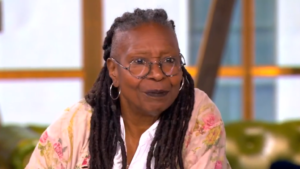Lady, What Waist? | The New Yorker

Bear in mind the Trompe l’Oeil Sweatpants from Balenciaga? The practically twelve-hundred-dollar heather-gray drawstring pants that appeared unusual, harmless of trend, till the patron, scanning upward, caught the plaid trick occurring on the waist—the thought. It was the suggestion of male underwear, crimson plaid material stitched onto the highest of the sweats to imitate the looks of uncovered boxers, a glance referred to as sagging. The concept—a missive from the world of Demna Gvasalia, the inventive director of the model, who’s hailed or scorned because the priest of postmodern dressing—pressured a second of crucial reflection. As it’s with garments and the obscure feelings aroused in us after we take into consideration them, not to mention put on them, nowadays, a lot of the reflection occurred on TikTok. A consumer, seeing the pants on a rack at Selfridges, thought aloud, “This feels racist. This feels very racist, guys.”
Teachers had been referred to as into the discourse, shading in elegant historicizing to the cost, which was an apparent one about commercialism and the Black man, policed for his presentation, drained dry of his improvements, sartorially, to say nothing of the remaining. These public conversations really feel chilly and scientific, as Black individuals are pinned down and wriggling beneath the microscope. However the froideur doesn’t preclude correctness. As soon as European trend homes stopped pretending that they had been blind to Black tradition, they started to brazenly feed on it. Sagging had made younger Black males objects of scorn, significantly by the paternalists—Invoice Cosby, the daddy; Barack Obama, the politician; and Eric Adams, the cop—who had every performed their separate campaigns admonishing the brothers for not pulling up their pants. The derision was predicated on safety. Black man, make them respect you by your costume. Black man, maintain your self excessive. Laws towards sagging—trendy morality ordinances, handed in municipalities in states akin to New Jersey, Illinois, and Michigan, and throughout the South—grew to become a attainable pretense for arrests. In February, 2019, in Shreveport, Louisiana, Anthony Childs died whereas being chased by police, who pursued him for a “saggy pants” violation. They engaged in gunfire, and though the coroner dominated Childs’s loss of life the results of a self-inflicted wound, he was killed in a confrontation that by no means ought to have occurred within the first place. Did Balenciaga care? The model’s sweatpants, checked out by way of the prism of loss of life and disrespect, had been an actual drawback and a kind of social evil, conjuring our bodies in effigy. Like David Hammons’s severed hoodie, nailed on the excessive airplane of a white wall, the form of the misplaced head nonetheless there, however with no soul to present us commentary.
There isn’t a manner Demna and firm didn’t know what they had been doing with their controversial waists, no manner they weren’t curious in regards to the energy of displaying your ass, so to talk. Punditry, lay and severe, does not likely deal with the ambiance by which a designer like Demna and his creative peerage create, which isn’t blasé, and which actually isn’t race-blind, a lot as it’s antic. There’s a sturdy perception in dressing “unsuitable,” a perception that may be located proper on the space of the waist. Sagging used to unnerve the world as a result of it made express, even erotic, the male physique. It provides males what girls supposedly have: curves. (A half-conscious homophobia impressed lots of the vitriol towards low-slung pants, too). The look doesn’t outrage as a lot on this decade. For one, the waists rose and the circumferences shrunk, as Black males performed with the proportions of the prepster and the dandy. Additionally, the waists uncovered are completely different. Isn’t it humorous to go downtown and see the teenagers, obsessive thrifters, dressed within the voluminous shapes of rappers within the two-thousands, wanting like something however themselves? And naturally, the wrongness—the denims, dragging on the sidewalk, overlarge on the waist, freely exposing ass crack—has its personal guidelines. One recognized inhabitant of the type is the singer Billie Eilish, very well-known, very white. Eilish has at all times been drawn to the dishevelled and the obscuring. She likes the best way the garments make her really feel, and he or she likes that the silhouettes make it exhausting to determine the strains of, and due to this fact sexualize, her physique. Eilish’s type has grown extra elaborate, as of late, gayer and Blacker, with the prospers of bandannas and snapbacks, the frameless Cartier-style glasses of the type you’ll count on to see sitting low on the nostril bridge of a trend head from Atlanta or Detroit. The accusations of cultural appropriation directed her manner aren’t actually strident, although. They’re principally bewildered. How does a twenty-two-year-old come to decorate like Chingy?
The dissolution of strict gendered dressing is the stale chat of this millennium. However what’s explored much less usually is the disarticulated ingredient of race play. I consider HommeGirls, {a magazine} and a clothes model, launched by Thakoon Panichgul, in 2019. The identify, omnivorous, manages to pun on Rei Kawakubo’s Comme des Garçons, which is already referencing Françoise Hardy, the French delineation of the genders, and the previous slang for what you’ll name your good girlfriend. A preferred merchandise from HommeGirls is its chambray boxer, which the wearer is aware of she will pull up in order that it reveals over the band of her low-waist denims. The aura of the gamine encircles HommeGirls. We’re not within the setting of queerness, of deep androgyny. The model’s mission assertion, citing Joan of Arc, Katharine Hepburn, Yohji Yamamoto, preserves nonetheless a way of glamorous distinction: “There’s a boy in each woman, an homme in each girl.”
What the waist does in clothes, and what it could possibly do to clothes, is the location of tolerating and inchoate panic. For all of the literacy round Instagram Face, there isn’t commensurate seriousness utilized to our tradition of physique modification, related to girls marked by their race, their class, their transness. The B.B.L. physique, created by way of surgical procedure or by way of girdle coaching, is as if a tailoring of the flesh. The lady with the Coca-Cola-bottle form means to appear to be she’s been carved—she isn’t on the mercy of Ozempic naturalism. Not many days after giving beginning, Cardi B went to Paris Style Week with an excessive waist, due to her dutiful sporting of a magnified faja, or girdle. (The identify of one of many extra well-liked sculptwear manufacturers riffs on the praise given to a “snatched” particular person: What Waist.) Some who could have a extra subdued relationship to physique alteration really feel they’re managed by development, their shopping for practices determined by a divining rod. When millennial girls bought knowledgeable that the right pant silhouette of the twenty-tens, the excessive waist—which truncated the torso, elongated the leg, and made of each ass a pear—was on the best way out, with low-rise making its incursion once more, there was lots of actual anger. They had been ageing, and their our bodies had been altering. They felt haunted by the tabloid period of Paris, Britney, and Lindsay—by their very own worry of trash. Actually, this resuscitated low-rise asks for one thing else. The trouser form is in vogue; girls are knowingly shopping for pants a measurement or two bigger, deëmphasizing their trunks, creating billows with their legs. However so are males. I get a thrill recognizing the dipped waists and gaping, pleated legs. Abercrombie & Fitch, J. Crew, American manufacturers plotting comebacks, are pushing the drop waist, unimaginable just some years in the past. The temperance look looks like a response towards a magnificence customary drifting away from whiteness; in different phrases, it’s associated to the loss of life of Kardashianism, the place even the sisters seem like lightening their tans and slimming their backsides.
The racialized waist was on my thoughts, earlier this month, when the Metropolitan Museum of Artwork introduced the theme of the Costume Institute’s 2025 exhibition, the generally forgotten companion to the celebrity-filled gala. Subsequent yr’s celebration, informally dubbed the “Males Gala,” is known as “Superfine: Tailoring Black Type,” and it’ll revolve across the determine of the Black dandy. This comes after the rumors in regards to the final gala, {that a} new theme was rushed in when the museum’s leaders rejected what was allegedly Anna Wintour’s unique plan: a celebration of John Galliano, the designer who was fired from Christian Dior for his racist and antisemitic rants. Nonetheless this subsequent present got here to be, the choice validates a long-manifest turnabout, which is that the muse of visionary dressing is now the person. The dandy, in his cinched and showy put on, is the ur-creature of Black trend. He’s a determine greatest understood from the vantages of the eighteenth, nineteenth, and twentieth centuries, though trendy individuals and trendy designers, akin to Grace Wales Bonner, a remixer of suiting from Europe, West and East Africa, and the Caribbean, do his work. If he’s a person, then he’s not in worry of muddling the binary, together with his heeled chaussures, coiffed hair, and conspicuous jewellery. And he could not even be a person. What New Negro outdid Gladys Bentley, the lesbian blues singer of the Harlem Renaissance, in her tilted high hat, cane, and tuxedo, all shockingly white?
What is going to it imply to have any and all “honor” the dandy, to decorate in his formidable shadow? It ought to appear startling that the gala night time distinctly pleads for drag. Issues will strut down the steps, and they are going to be fascinating ones. The visitor curator of the exhibition, Monica L. Miller, is the creator of “Slaves to Style: Black Dandyism and the Styling of Black Diasporic Identification,” revealed in 2009. Miller brilliantly traces a “transformation in black type—from costumed object designed to trumpet the wealth, standing, and energy of white masters to self-styling topics who use immaculate clothes, arch wit, and pointed gesture to announce their usually controversial presence.” A tragedy that André Leon Talley didn’t dwell to place the approaching mise en scène in its true proportion. ♦






